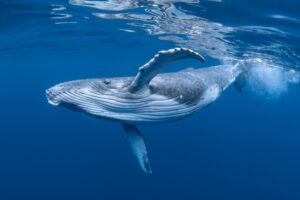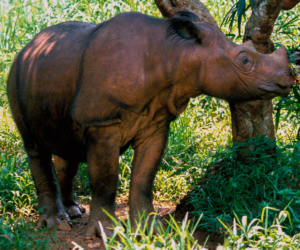An honest reflection on positive news, with a dash of hope
Written by Olivia Nater | Published: December 29, 2023
Dear reader, as environmental and humanitarian news is generally very depressing, I wanted my final blog post of 2023 to be a summary of major global trends that are moving in the right direction. Collecting examples proved harder than anticipated, because for many widely touted success stories, progress has sadly stagnated or even reversed in recent years. In addition, several “positive” trends also have significant downsides that often remain unmentioned. Hence, this article turned into more of a reflection on how data are often misrepresented to suit a particular narrative. Nevertheless, there remains a lot to be celebrated – it is possible and necessary to cultivate hope with the unfiltered facts!
The “hurray, but…” stories
While researching global improvements over time, I came across a graphic by the Gapminder Foundation, which included a selection of figures showing “bad things decreasing,” and “good things increasing.” In light of the overabundance of bad news, I am all for highlighting the good stuff. However, this should be done in a way that is transparent and honest about the bigger picture.
The world is full of problems, which people are often very aware of. But most people have no idea about the many improvements we have visualized, and therefore they lose hope for the future and think the world is doomed.https://t.co/fOzOsDv5qU pic.twitter.com/Hyk3jqHpUM
— Gapminder (@Gapminder) December 25, 2023
Let’s begin with the biggest successes. For example, global child mortality really has plummeted since the turn of the 20th century. In 1900, around 41 percent of children, or two out of five, died before the age of five. Today, thanks to advances in healthcare, sanitation and food availability, the proportion of children dying before their fifth birthday is only 4 percent, or four in a hundred. (It’s important to note, however, that according to the World Health Organization (WHO), child survival gains have “stalled significantly” since 2010.)
Many of the other trends showcased by Gapminder are also certainly worth celebrating, such as increasing longevity (with the exception of recent years due to Covid-19), education and literacy; the eradication of smallpox; and declining HIV infections.
 Major, long-term victories are sparser on the environmental front due to the explosion in human numbers and consumption rates, but they include the successful phase-out of ozone-depleting chemicals and of leaded gasoline. Two other positive environmental trends not included in the Gapminder graphic are the (partial) recovery of some whale species thanks to the international moratorium on whaling, as well as the decrease in sulfur dioxide and nitrogen oxide pollution (and thus in acid rain) across North America and Europe due to tighter emissions regulations.
Major, long-term victories are sparser on the environmental front due to the explosion in human numbers and consumption rates, but they include the successful phase-out of ozone-depleting chemicals and of leaded gasoline. Two other positive environmental trends not included in the Gapminder graphic are the (partial) recovery of some whale species thanks to the international moratorium on whaling, as well as the decrease in sulfur dioxide and nitrogen oxide pollution (and thus in acid rain) across North America and Europe due to tighter emissions regulations.
Now for the more ambiguous stuff. On gender, Gapminder highlights that women now legally have the right to vote (“on paper…”) in all countries, and that women are increasingly represented in government. But in recent years, very little progress has been made on gender equality overall, especially women’s safety from harm. For example, gender-based violence is still rampant and invariably increases during crises (such as Covid-19), and maternal mortality rates have been stagnating globally and even worsening in several countries since 2015. In addition, even though contraceptive prevalence is increasing, the total number of women with an unmet need for modern contraception is still growing because family planning programs are not keeping pace with population growth.
The Gapminder graphic also implies that world hunger is on its way out, but the data clearly reveal that this too has been rising again since 2015. Gapminder presents increasing cereal yield per area of land as another success story. While the Green Revolution helped avert mass starvation, agricultural intensification spelled disaster for our environment — it is a (in some cases the) leading cause of deforestation, biodiversity loss, climate change, desertification, and freshwater overextraction and pollution. Another “good stuff increasing” example with a concerning flipside is mobile phone ownership. Sure, it’s great that more and more people are benefiting from the convenience of mobile phones, but the surging demand for electronics as a result of population growth and “upgrade culture” is creating mountains of hazardous waste and driving destructive and dangerous mining activities.
The problems with cherry picking and greenwashing
As mentioned before, I absolutely support celebrating positive trends, but when data are presented in a way that obscures reality, this is problematic. While overall, environmental awareness is increasing, many people still underestimate, rather than overestimate, the severity of our planetary crises. Surveys by Gapminder, for example, found that 62 to 75 percent of respondents underestimate the extent of overfishing, natural resource extraction, and wildlife decline. Equally, many people in the Global North aren’t aware of the severity of gender inequalities that persist in developing countries, or that progress on several key sustainable development indicators has reversed in recent years. As scientists concluded in a 2021 paper on avoiding a “ghastly future,” “only a realistic appreciation of the colossal challenges facing the international community might allow it to chart a less-ravaged future.”
Let’s celebrate genuine progress which proves that a better world is within reach, but within the context of the bigger picture so that we know where we need to double down on efforts and funding. Of course, data can also be manipulated in a way to rationalize overly negative perspectives. Focusing only on the bad stuff risks fueling depression and apathy. On that note, here are a few more good news nuggets to help you slide into 2024 with a nice little dose of hope.
Recent good stuff

According to the latest assessment of all five rhino species, the greater one-horned rhinoceros and the black rhinoceros are actually increasing in numbers, which now stand at around 4,000 and 6,500 individuals, respectively. The most endangered rhino (and a close relative of the long-gone woolly rhinoceros), the Sumatran rhinoceros, is standing on the brink of extinction, but a ray of hope for this species arrived in the form of a fuzzy new calf born in late November at a sanctuary in Sumatra.
Also in November, an equally unusual looking species, the blind De Winton’s golden mole, was rediscovered on the west coast of South Africa after not having been recorded since 1937!
A little closer to home in December, beavers were intentionally released into California waters for the first time in 75 years, while Colorado officially kicked off its wolf reintroduction program with the release of the first five animals. Both species play a key role in ecosystem recovery and improving climate resilience.
Finally, if you want to see amazing people actively improving lives and catalyzing grassroots-driven change in developing countries around the world, have a look at our Global Partners. Each of our partner organizations was handpicked because of their on-the-ground efforts to remove barriers to education, family planning and healthcare, and to protect nature and wild species. Our partners are proof that there are countless people out there working hard to build a better world. Onwards and upwards!

